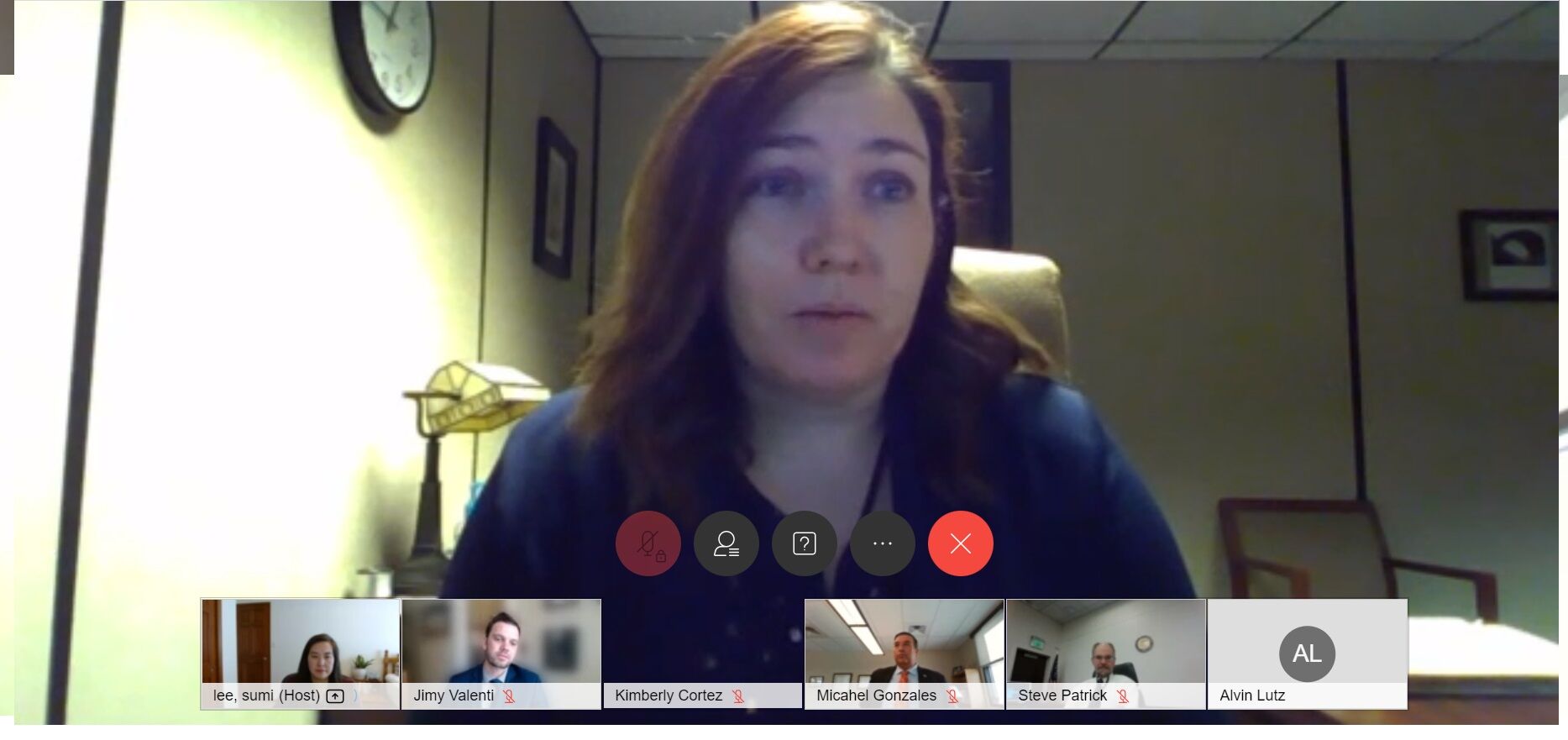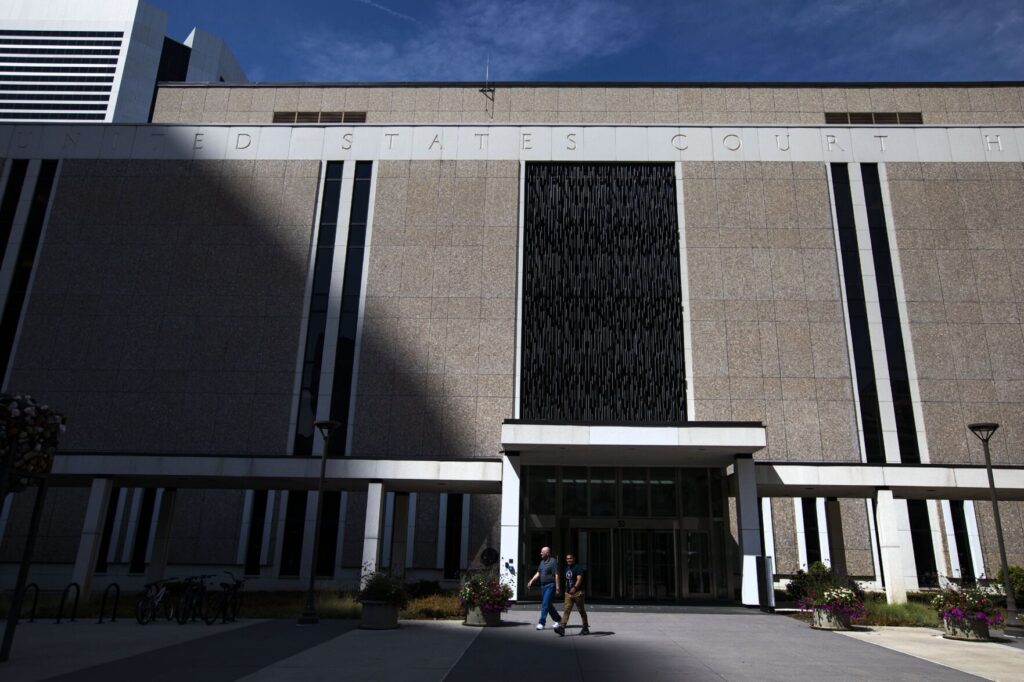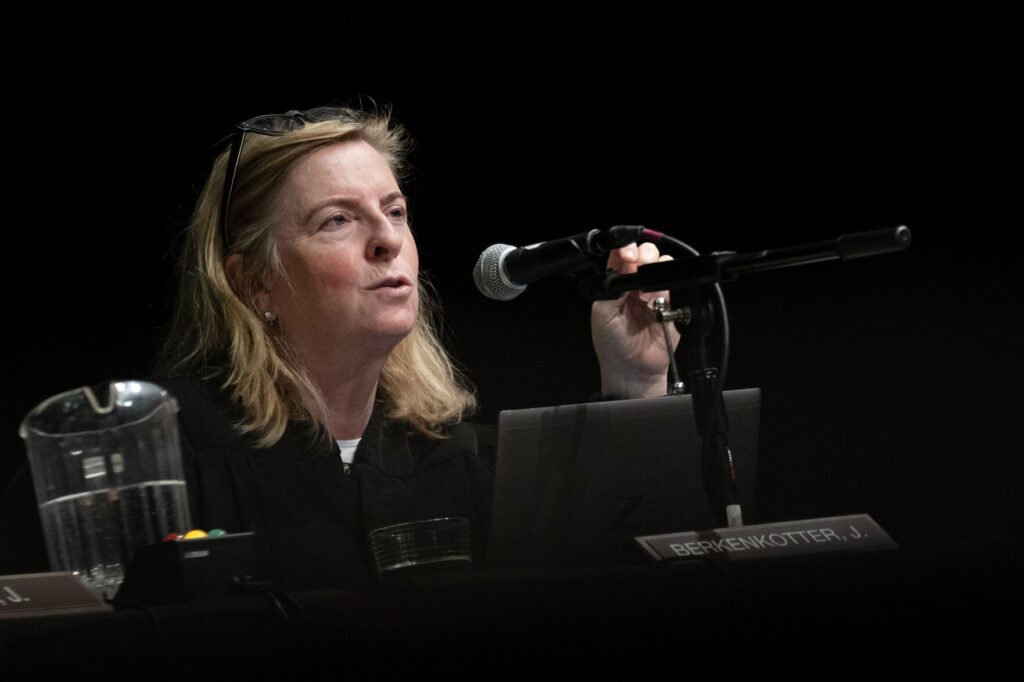Help wanted: Rural judges pitch county court openings to lawyers, non-lawyers alike

With a trio of upcoming judicial vacancies in southwestern Colorado, the state’s Judicial Department hosted a discussion for potential applicants shining a light on what to expect should they be appointed to the bench in some of the least-populous counties in the state.
“Part of being a judge is that you are always a judge. At the grocery store, if somebody wants to start asking your opinions about a case, you are still a judge,” said Chief Judge J. Steven Patrick of the Seventh Judicial District. “It’s easier said than done in small communities.”
On Thursday, Sumi Lee, the head of judicial diversity outreach, moderated a discussion featuring Patrick, whose judicial district has an opening on the Ouray County Court, and judges from the neighboring 12th Judicial District, where there are vacancies in both Rio Grande and Conejos counties.
Chief Judge Michael A. Gonzales of the 12th Judicial District said the new county judges can expect to spend 60% of their time on criminal matters, and handling civil, traffic and protection order cases during the remainder.
“There are people around you to provide support. Most judges are very easy to access,” he said. “Obviously, you’re the judge, so you ultimately make the decision, but they’re here to help you and support you.”
The discussion was part of an initiative from Lee’s office to provide information to interested attorneys about judicial vacancies in rural parts of Colorado. The goal is to let applicants hear from chief judges about the culture of their judicial districts and to learn about the application process, which culminates in an appointment by the governor.
As part of the protocol, commissions of attorneys and non-attorneys screen applicants, interview candidates, and forward their recommendations to Gov. Jared Polis.
Jimy Valenti, a deputy public defender who sits on the 12th Judicial District’s nominating commission, said that the volunteer commissions are not “out to get” anyone, but to find the best two or three candidates to recommend.
“I think the connection to the community is something that really comes up behind closed doors a lot. People who come in with a really strong ‘why’ and a really strong purpose, and that connection to our community – it doesn’t look like they’re flying in to get a judgeship or get a notch under their belt,” Valenti said. “That gets a lot of points.”
All of the open county court positions are part-time, with Ouray County comprising a 20% position, Conejos County at 40%, and 55% for Rio Grande County. There is training for new judges, but it does not always happen immediately. Although the judges will handle first appearances of defendants in criminal felony cases, all appearances for misdemeanor and traffic offenses and civil cases with disputes up to $25,000, being a lawyer is not a requirement for the job.
A spokesperson for the Judicial Department said that in the least populated counties, judges need only have a high school education or equivalent. Currently, there are three non-attorney – or “lay” – judges, all of whom sit on county courts in the Eastern Plains.
Alvin “Al” Lutz, a former banking executive, received an appointment as a part-time Hinsdale County Court judge in 2005 and served until 2020. Now a member of the Seventh Judicial District’s nominating commission, Lutz said non-lawyers who want to be a judge must have a passion for the law, as they will need to work hard to make up for their knowledge deficit.
“You’ll need extra time to prep yourself, understand the case that is coming before you, and be prepared to deal with that case so you’re not the one causing the delay in the process,” he said. Lutz also mentioned that judges must be good role models and team leaders, and possess adequate communication skills.
“Give them a ruling that they understand in English, not legalese,” he said.
The current judge on the Conejos County Court, Kimberly Cortez-Rodriguez, spoke about her adjustment to the part-time position as a lawyer with young children.
“For me, I didn’t initially try to take on another job,” she said. “It was a priority for me to be home with (her children), so I wasn’t working outside of the judge role at least at first.”
Cortez-Rodriguez said she began to augment her workload by traveling to other counties and hearing cases where other judges had conflicts of interest. Last month, Polis elevated her to the district court bench, creating the vacancy.
“When you first come on, depending on what your experience is, there’s gonna be something that makes you feel a bit overwhelmed. Maybe there’s a crushing docket or just getting up to speed on something. It is perfectly OK to take time, take a breath, realizing you don’t have that answer right away,” she said.
Gonzales, the chief judge of the 12th Judicial District, acknowledged that it can be difficult to go through retention, which entails a citizen-led commission reviewing a judge’s performance and recommending to voters whether the judge meets performance standards or not.
“Take the criticism, when there are criticisms, and focus on ways to improve yourself,” he advised.
For lawyers who apply to be judges, Valenti reminded applicants to make connections with the non-attorneys who sit on the nominating commissions, not simply those with legal backgrounds.
“I’ve seen people talk in detail about what cases they’ve done or great legal arguments they’ve put together,” he recalled. But “it’s kind of important to speak like a normal person.”
Applications are due for the Conejos County court on March 11, for the Ouray County Court on March 16, and for the Rio Grande County Court on March 18. Candidates must be a resident of the county at the time of their appointment.














